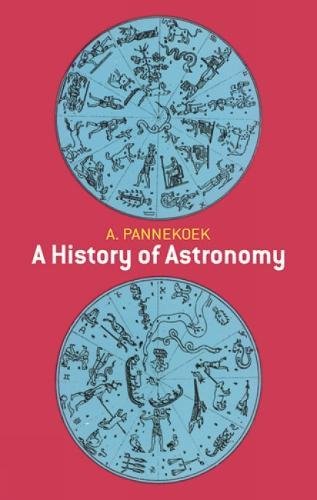Paperback, 560 pages
English language
Published Nov. 1, 2011 by Dover Publications.

Paperback, 560 pages
English language
Published Nov. 1, 2011 by Dover Publications.
Few histories of astronomy offer the special human dimension of this book. For Professor Pannekoek (University of Amsterdam), the history of astronomy consists of the growth of man’s concept of his world. The study of the cosmos became an essential part of the history of human culture, an adventure of the mind. In this well-balanced account of that adventure, the author is at pains to relate the development of astronomy to the social and cultural background in which it is nurtured. Thus, the effect of changes in political conditions, the influence of geography, and the growth of industry and of communications methods are clearly and incisively described. Dr. Pannekoek begins with an unusually detailed account of astronomy in ancient times, including Babylonian sky-lore, Assyrian astrology, the Ptolemaic worldview, Hellenistic astronomy, the epicycle theory, and Arabian astronomy. The growth of astronomy after Copernicus constitutes the second part of the book, acquainting …
Few histories of astronomy offer the special human dimension of this book. For Professor Pannekoek (University of Amsterdam), the history of astronomy consists of the growth of man’s concept of his world. The study of the cosmos became an essential part of the history of human culture, an adventure of the mind. In this well-balanced account of that adventure, the author is at pains to relate the development of astronomy to the social and cultural background in which it is nurtured. Thus, the effect of changes in political conditions, the influence of geography, and the growth of industry and of communications methods are clearly and incisively described. Dr. Pannekoek begins with an unusually detailed account of astronomy in ancient times, including Babylonian sky-lore, Assyrian astrology, the Ptolemaic worldview, Hellenistic astronomy, the epicycle theory, and Arabian astronomy. The growth of astronomy after Copernicus constitutes the second part of the book, acquainting the reader with the epoch-making work of Kepler and Newton and the astonishing developments of celestial mechanics during the eighteenth century. Part III begins with Herschel, the gifted amateur whose observations opened up new horizons, and ends with Eddington’s pioneering studies of the internal constitutions of stars. Comprehensive, well-written and full of small, revealing details that attest to the scope and depth of the author’s learning, this splendid survey belongs in the library of every astronomer — or anyone interested in the grand mystery of the cosmos and man’s attempts to penetrate it.